Mountain Clematis – A Vigorous Choice Ideal For Covering A Garden Structure

CLIMBERS > CLEMATIS > MOUNTAIN
Reviewed By COLIN SKELLY

Colin is a Horticulturist and Horticultural Consultant with experience in a range of practical and managerial roles across heritage, commercial and public horticulture. He holds the Royal Horticultural Society’s Master of Horticulture award and has a particular interest in horticultural ecology and naturalistic planting for habitat and climate resilience.
Contributions From KEN BLACK

Ken is the Membership Secretary of the British Clematis Society and a member of the International Clematis Society, RHS Silver-Medalist, Owner of Ken Black Clematis and star of his own YouTube channel, where he shares knowledge learned over the course of 40 years.

Peter is the third-generation Owner of specialist nursery Thorncroft Clematis who are 12 x RHS Chelsea Gold Medal winners and known worldwide for their expertise and knowledge in the field of clematis. Peter is also a sought-after public speaker on the topic of clematis and is a guest speaker for The English Garden School at Chelsea Physic Garden in London.

Fiona is the Secretary of the International Clematis Society and a member of the British Clematis Society. She has been growing Clematis for 40 years and even has a Clematis named in her honour!
IN THIS GUIDE
CLEMATIS GUIDES
The most vigorous of climbers in all of the Clematis family, Clematis montana is an excellent choice for covering a fence, wall or other upright structure in foliage and flowers with minimum fuss.
Not only do they grow extremely quickly, reaching more than ten metres in length if left unchecked, but they also flower profusely.
“Asking yourself what you want a clematis to do is the most important question,” says Ken Black, the owner of Ken Black Clematis, a plant nursery that specialises in these beautiful climbers.
“If you want one that is vigorous to cover a shed, garage, large wall or fence, a Montana will do this, and provide flowers in May.”
This means that they’ll put on a beautiful show during the blooming months, with pink or white blossoms swarming their vines in a highly pleasing manner.
They’re not just pretty faces, either.
The subtle vanilla aroma which accompanies their appearance is as attractive to humans as it is to pollinators, so expect plenty of bees, birds and butterflies to descend on your garden as well.
“If you want a scented clematis, then a Clematis montana might be the one for you,” says Fiona Woolfenden, the secretary of the International Clematis Society.
“Buy these clematis when the plant is in flower so you can smell the scent or from a reputable nursery who says that the plant they have is scented.”
Overview
| Botanical Name | Clematis montana |
| Common Name(s) | Mountain Clematis / Himalayan Clematis / Anemone Clematis |
| Plant Type | Perennial / Climber |
| Native Area | Asia |
| Hardiness Rating | H5 |
| Foliage | Deciduous |
| Flowers | Abundant single or double white or pink flowers cluster on the vine |
| When To Plant | March-April |
| When To Prune | March-August |
Sunlight
Preferred
Full Sun or Partial Shade
Exposure
Exposed or Sheltered
Size
Height
10M+
Spread
10M+
Bloom Time
Spring
Soil
Preferred
Most fertile soils
Moisture
Moist but well-drained
pH
Alkaline to neutral
According to Kew, Clematis is a genus of 384 accepted species.1Clematis. (n.d.-b). Kew Royal Botanic Gardens. Retrieved March 14, 2023, from https://powo.science.kew.org/taxon/urn:lsid:ipni.org:names:329401-2
The name of the species Montana refers to the mountainous regions of Asia to which this plant is native to.2Clematis montana. (n.d.). North Carolina Extension Gardener Plant Toolbox. Retrieved March 14, 2023, from https://plants.ces.ncsu.edu/plants/clematis-montana/
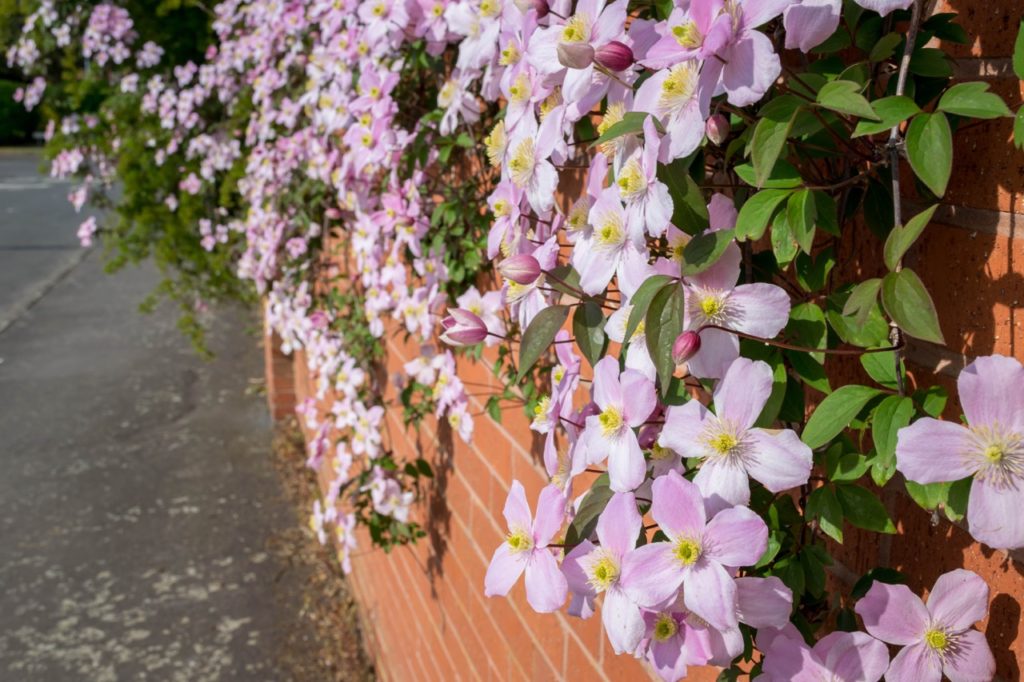
Mountain clematis are favoured in gardens around the UK as a means of quickly and effectively covering a vertical structure, though they can also be used as makeshift ground cover.
Having said that, their rapid climbing ability and the profusion of flowers they produce each spring are certainly their main strong suits.
Common Varieties
C. montana is a popular climber throughout the UK and various cultivars have been specifically bred for horticultural use in garden displays.
The most popular among them include:
C. montana ‘Elizabeth’
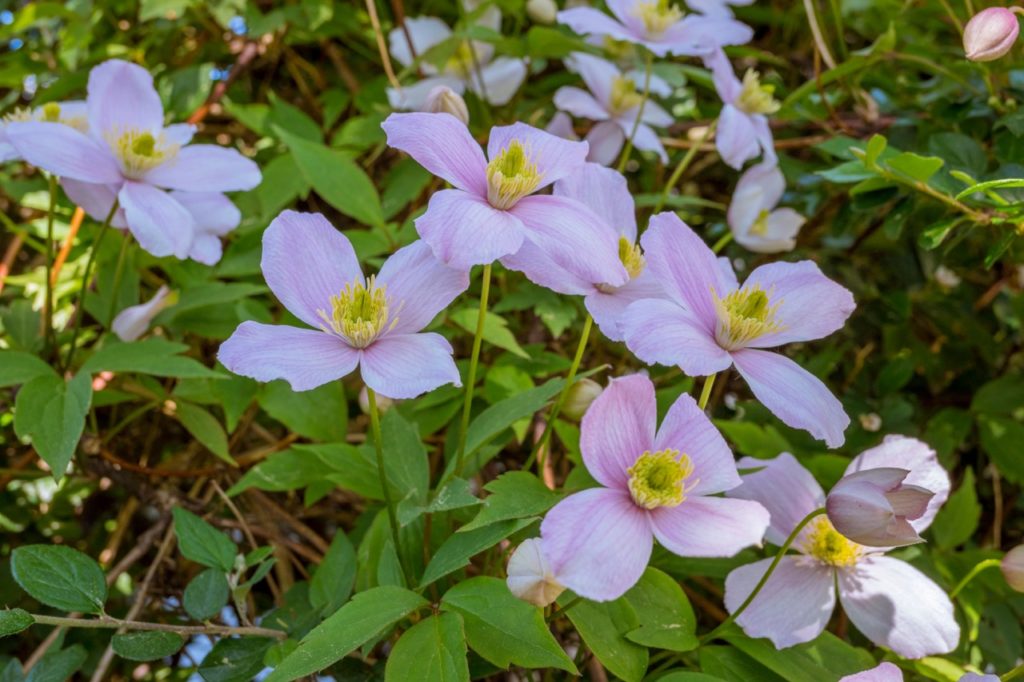
With pale pink blossoms that exude a deliciously sweet scent, ‘Elizabeth’ is ideal for covering the wall or fence adjoining a walkway so that they can be enjoyed to their fullest.
During the flowering season, it blossoms so profusely that leaves are a rare sight.
C. montana ‘Freda’
Roughly half the size of most clematises, ‘Freda’ is perfect for smaller spaces and its conservative growing habits mean there’s no danger it will get out of hand.
What’s more, its cherry-pink petals fade to white in the centre with yellow stamen, making it one of the more striking flower heads in the C. montana family.
C. montana var. grandiflora

This oversized clematis boasts flowers up to 7cm in diameter and, if left unchecked, will reach up to 12m in both height and spread.
Its brilliant white flowers are not as fragrant as some other species, but their purity and panache will shine in any garden display.
Planting Mountain Clematis
It’s a good idea to soak your clematis plant in water for at least a quarter of an hour before planting to ensure it’s fully hydrated.
“My grandfather told me: ‘careful planting is the key to success’ – and I’ve never forgotten it,” shares Peter Skeggs-Gooch, the owner of Thorncroft Clematis & Climbers.
“Preparation of the hole and added material to improve the soil are the most important factors.”
Dig a hole that’s big enough for the root ball to sit a few centimetres below the surface of the soil and make sure the base and sides are malleable enough to allow for easy drainage.
Organic compost can help to give the plant the best chance of establishing itself quickly, so a handful of this at the bottom of the hole is a good idea.
“Large flowered clematis are greedy plants and need to be fed regularly,” explains Fiona Woolfenden.
“It is best to give them a top dressing of compost every year in the spring and a handful of slow-release fertiliser such as chicken manure pellets.
“Feed during the summer with tomato feed to keep the blooms going.”
Clematis montana Care
C. montana is incredibly easy to grow in the UK and can handle most temperatures and humidity levels.
It may struggle if exposed to temperatures below 10°C on a consistent basis, but generally speaking, it’s happy enough in most locations.
Aspect
Since it works best when trained up a fence or trellis and prefers as much sunlight as you can give it, it’s advisable to plant it next to the south-facing side of the structure you wish to adorn with its beautiful blooms.
“When considering a planting position, always think where the plant will want to go rather than where you want it to go,” advises Colin Skelly, a Horticultural Consultant with over a decade of experience in the industry.
“It will always grow towards the maximum available light, so place the plant so that it can grow where it will want to.
“This will avoid the need to cut back C. montana, which will not require hard pruning unless it outgrows its desired position.
“C. montana var. grandiflora is something of an exception, as it will grow happily in shadier areas.”
Overwintering
Depending on the cultivar chosen, mountain clematis usually has an RHS hardiness rating of H5.
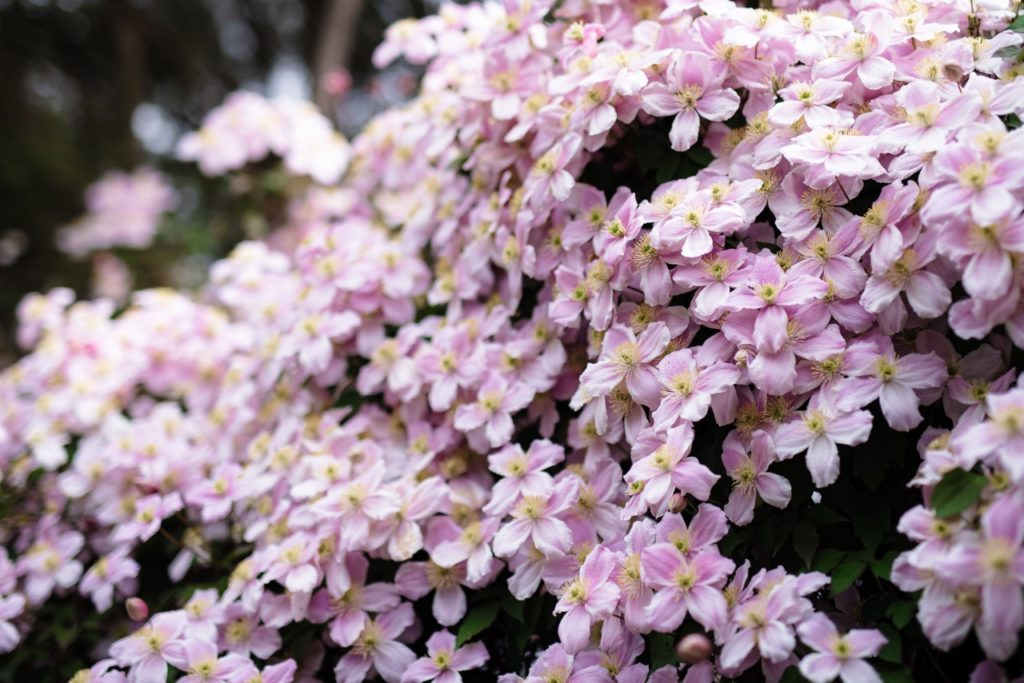
That means it can withstand most British weather quite comfortably, but if the temperature does manage to drop beneath -15°C where you live, you may look to mulch around the base.
Soil
“Although they tolerate cold and winds they are not used to boggy or overly wet conditions and will not thrive if they do not have good drainage,” explains Ken Black.
If your garden suffers from particularly poor soil, you may want to consider enhancing it with organic compost.
Watering
Water newly planted specimens regularly until the roots are established.
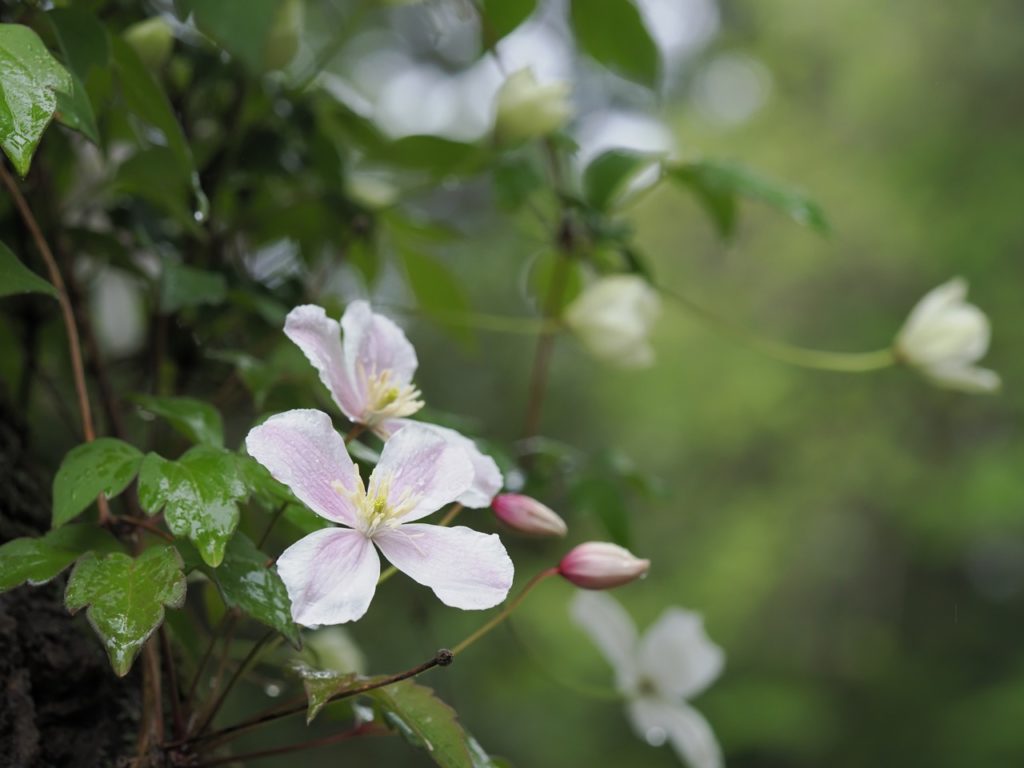
After it has reached maturity, it shouldn’t require any irrigation other than that it receives from precipitation.
Container Growing
Although clematis plants are normally grown directly in the ground, it’s entirely possible to cultivate them in a container.
Choose one which is around 50cm wide and at least as deep and add stones to the base to aid drainage.
Other than that, plant your mountain clematis in the same way you would if planting in the ground, using the guidelines mentioned above.
“Don’t put a clematis in a small pot straight in the garden as the slugs and snails will enjoy it more than you!” Fiona warns.
“Clematis in small pots, typically bought very cheaply in a supermarket, need to be grown in a pot for a year or so until they have a good root system.”
Pruning
In general, it’s not necessary to prune your mountain clematis plants at all.
“Before planting, make sure that you have the space for your clematis, especially C. montana types, which can grow to be huge,” says Fiona.
“Check how large the plant could get by looking at the plant label or consulting online.”
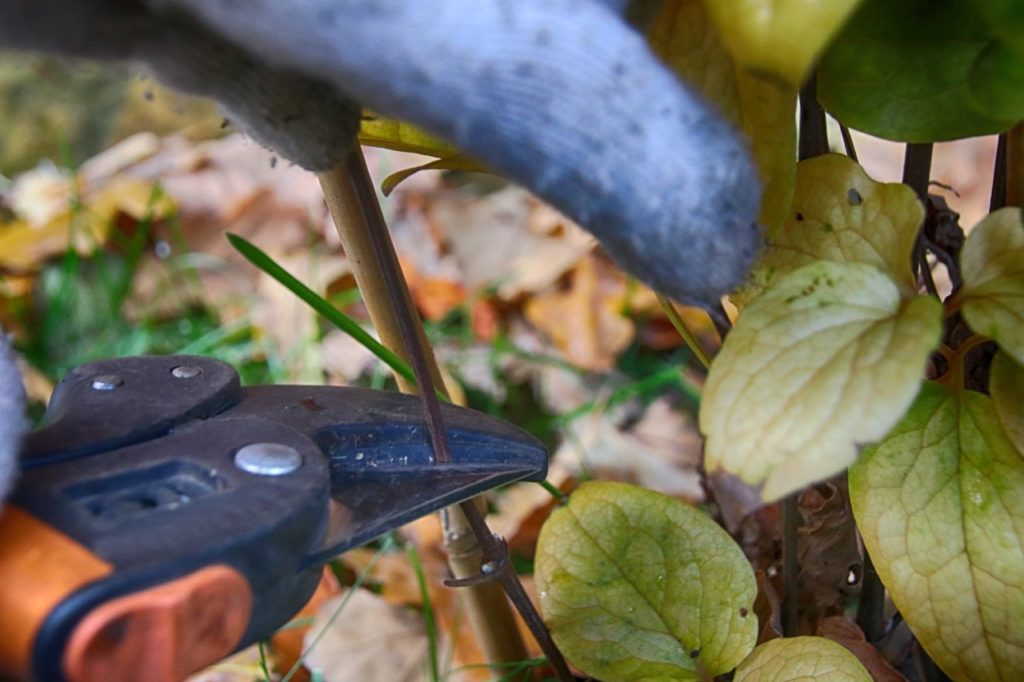
If certain vines and branches are becoming overgrown and unsightly, you might want to trim them back when the blooms fade.
You can also deadhead old blooms in autumn to encourage better growth next year.
Propagation
There are two ways to propagate mountain clematis – from softwood cuttings or by layering.
If following the former, cut a branch from the main plant of about 7cm in length in April or May.
Remove most of the foliage and plant the cutting upright in a rooting mixture, then cover it with a plastic bag or place it in a propagator.
Keep it warm and moist (but out of direct sunlight) until it has rooted, which normally takes around 5 weeks.
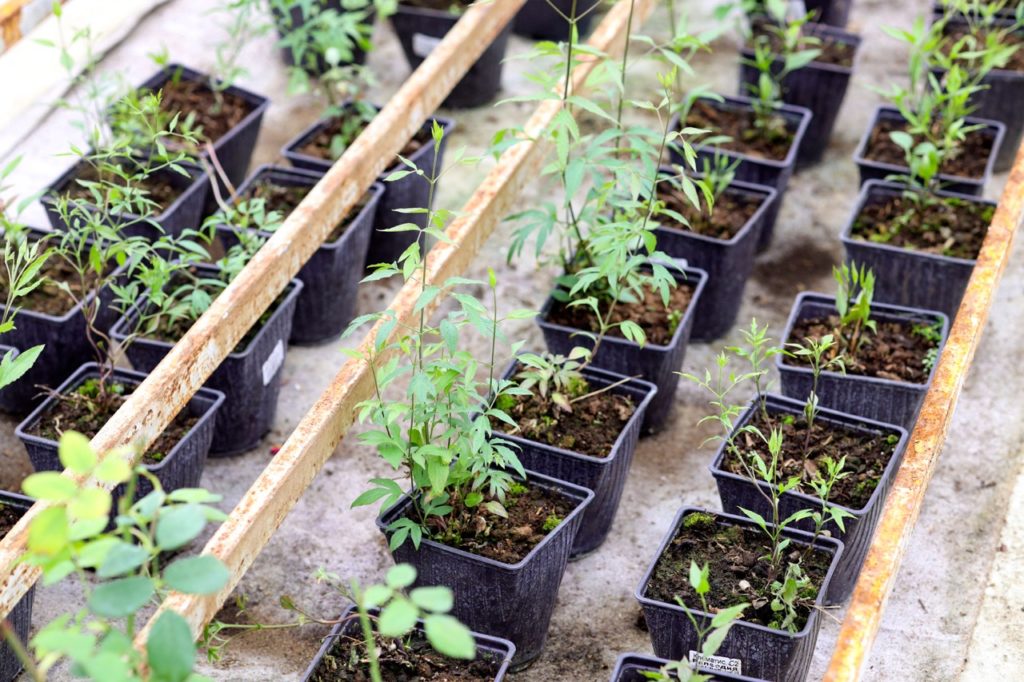
If layering, select a healthy stem which can reach the ground.
Bend it down to reach the soil and make a small nick in the stem near the tip, applying rooting hormone to the incision.
Bury the stem in a hole and use a stake or twine to secure it in place.
Water the trench and do not remove the stem from the main plant until it has established its own shoots.
Common Problems
“Many gardeners think they have clematis wilt when they see a plant with a stem with flowers and leaves that have drooped,” says Fiona Woolfenden.
“Wilt is actually very rare these days and what is much more common is that one or more of the stems of the plant has been damaged by snails or slugs, an animal or even a careless gardener!
“If only one stem has drooped, follow it back and see if you can find a damaged part on the plant.
“The damage can be just a small crack or bend in the stem or where a snail has stripped the outer layer off the stem.
“In these cases, cut the stem below the damaged part and it will regrow.
“If all the stems have drooped and you cannot see any damage, cut all the stems down and, as long as you planted it deep, it should regrow next year.
“Do not compost the stems you removed if you think the plant does have wilt.”
References
- 1Clematis. (n.d.-b). Kew Royal Botanic Gardens. Retrieved March 14, 2023, from https://powo.science.kew.org/taxon/urn:lsid:ipni.org:names:329401-2
- 2Clematis montana. (n.d.). North Carolina Extension Gardener Plant Toolbox. Retrieved March 14, 2023, from https://plants.ces.ncsu.edu/plants/clematis-montana/

